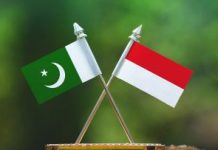By: Khalid Mahmood
The geopolitical landscape of South Asia has undergone a dramatic transformation following the brief but intense military confrontation between Pakistan and India on May 10th, 2025. What began as a localized skirmish along the contested Kashmir border quickly escalated into a full-blown crisis, drawing global attention and raising fears of a broader conflict? However, in the aftermath, Pakistan has emerged not only unscathed but stronger, asserting itself as a rising regional power. Through a combination of military preparedness, diplomatic agility, economic resilience, and strategic partnerships, Pakistan has reshaped alliances and power dynamics in South Asia.
The May 10th, 2025 clash was triggered by an exchange of artillery fire along the Line of Control (LoC) in Kashmir, which rapidly escalated into aerial engagements and limited ground offensives. Both nations accused each other of provocation, but Pakistan’s military response was notably swift and precise. Unlike past confrontations, where India’s conventional superiority often dictated terms, this time, Pakistan demonstrated tactical dominance, repelling Indian incursions with minimal losses. International intervention, spearheaded by China and the United Nations, helped de-escalate tensions before the conflict spiraled into a full-scale war. However, the brief yet intense confrontation had far-reaching consequences. Pakistan’s military performance shattered long-standing perceptions of Indian dominance, while it’s diplomatic maneuvering secured crucial international backing. The conflict became a turning point, accelerating Pakistan’s rise as a key player in regional geopolitics.
Pakistan’s military success in the 2025 conflict was no accident—it was the result of years of strategic modernization and doctrinal evolution. Pakistan deployed next-generation drones, including the Burraq and Shahpar models, to conduct precision strikes against Indian positions. Its missile defense systems, particularly the HQ-9/Pakistan variant acquired from China, effectively neutralized incoming threats. The successful use of the Ra’ad-II cruise missile and JF-17 Block III fighter jets underscored Pakistan’s growing defense self-sufficiency. These systems, developed in collaboration with China, provided a technological edge over India’s larger but less agile forces. Pakistan’s cyber units disrupted Indian communications and surveillance networks, showcasing an emerging domain of warfare where it holds a competitive advantage. This military prowess not only deterred further aggression but also reinforced Pakistan’s image as a formidable force, capable of defending its sovereignty against a numerically superior adversary.
Pakistan’s diplomatic strategy during and after the crisis was equally critical to its rise. Beijing played a pivotal role in mediating the conflict while reaffirming its commitment to Pakistan through the China-Pakistan Economic Corridor (CPEC). China’s diplomatic and military backing sent a clear message to India and the West about Pakistan’s strategic importance. Turkey, Saudi Arabia, and other Islamic nations rallied behind Pakistan, providing political and economic support. This not only strengthened Islamabad’s regional standing but also enhanced its influence in the Organization of Islamic Cooperation (OIC). Unlike previous crises, where Pakistan was often isolated, the U.S. and EU adopted a more neutral stance, acknowledging Islamabad’s role in Afghan stability and counterterrorism. This shift marked a significant diplomatic victory. By leveraging these alliances, Pakistan ensured that it was not cornered diplomatically, instead emerging as a key player in regional security frameworks.
Despite initial economic strain due to the conflict, Pakistan swiftly stabilized its position through strategic partnerships. China, Saudi Arabia and the UAE extended multi-billion-dollar investment packages, particularly in energy and infrastructure, mitigating short-term financial pressures. The operationalization of Gwadar as a deep-sea port and the acceleration of CPEC projects transformed Pakistan into a critical trade hub linking China, Central Asia, and the Middle East. Pakistan deepened economic ties with Central Asian Republics (CARs) and Africa, reducing dependency on traditional Western markets. These measures not only cushioned Pakistan’s economy but also positioned it as an emerging center of regional commerce.
Beyond hard power, Pakistan expanded its influence through diplomatic and cultural outreach. Islamabad played a key role in facilitating peace talks between the Taliban and regional stakeholders, reinforcing its image as a stabilizing force. Enhanced trade, defense cooperation, and cultural exchanges with CARs and African nations broadened Pakistan’s geopolitical footprint. The conflict highlighted Pakistan’s restraint and strategic maturity, improving its international image compared to India’s perceived aggression.
Despite its gains, Pakistan faces significant hurdles in consolidating its regional power status. Sustaining growth amid global inflation and debt pressures remains a challenge. Militant factions and political instability could undermine progress if not addressed. New Delhi is likely to counter Pakistan’s rise through military upgrades and stronger Western alliances, potentially reigniting tensions.
The May 10th, 2025 conflict has undeniably accelerated Pakistan’s emergence as a regional power. By combining military strength, diplomatic agility, economic partnerships, and soft power, Islamabad has repositioned itself as an indispensable actor in South Asian geopolitics. However, maintaining this momentum will require sustained reforms, strategic foresight, and careful management of internal and external challenges. As the world watches, Pakistan’s trajectory could redefine power dynamics in Asia, presenting new opportunities for regional cooperation—or confrontation. Whether it becomes a stabilizing force or a flashpoint for further conflict will depend on its ability to navigate the complex interplay of military, economic, and diplomatic pressures in the coming years.

















